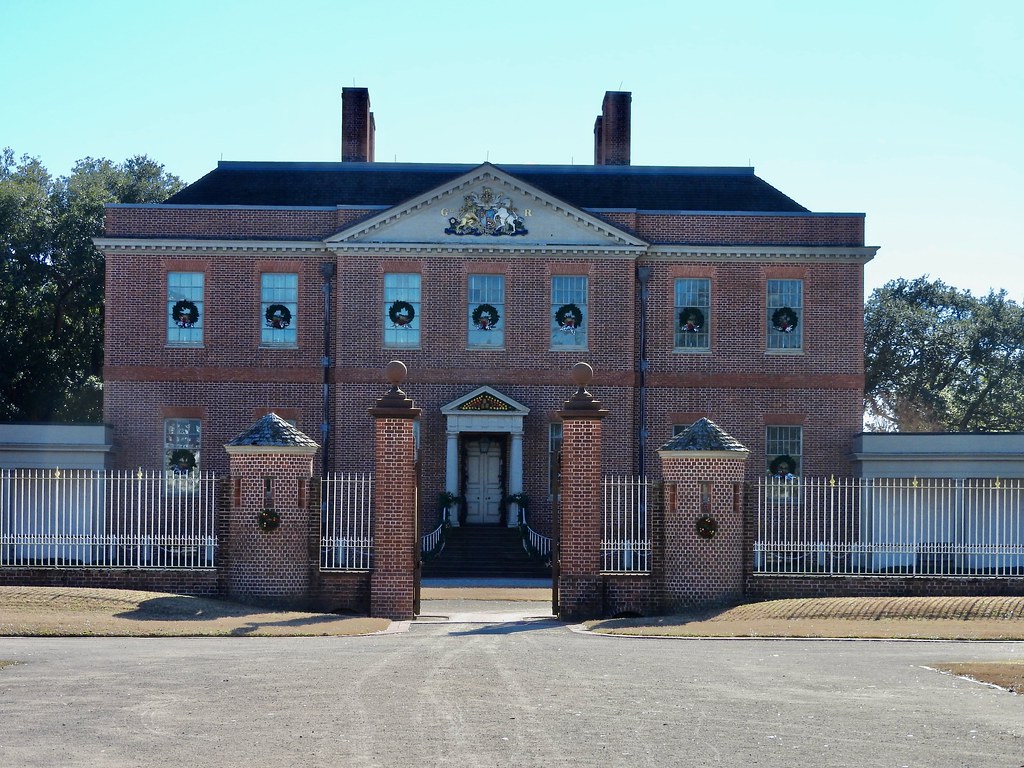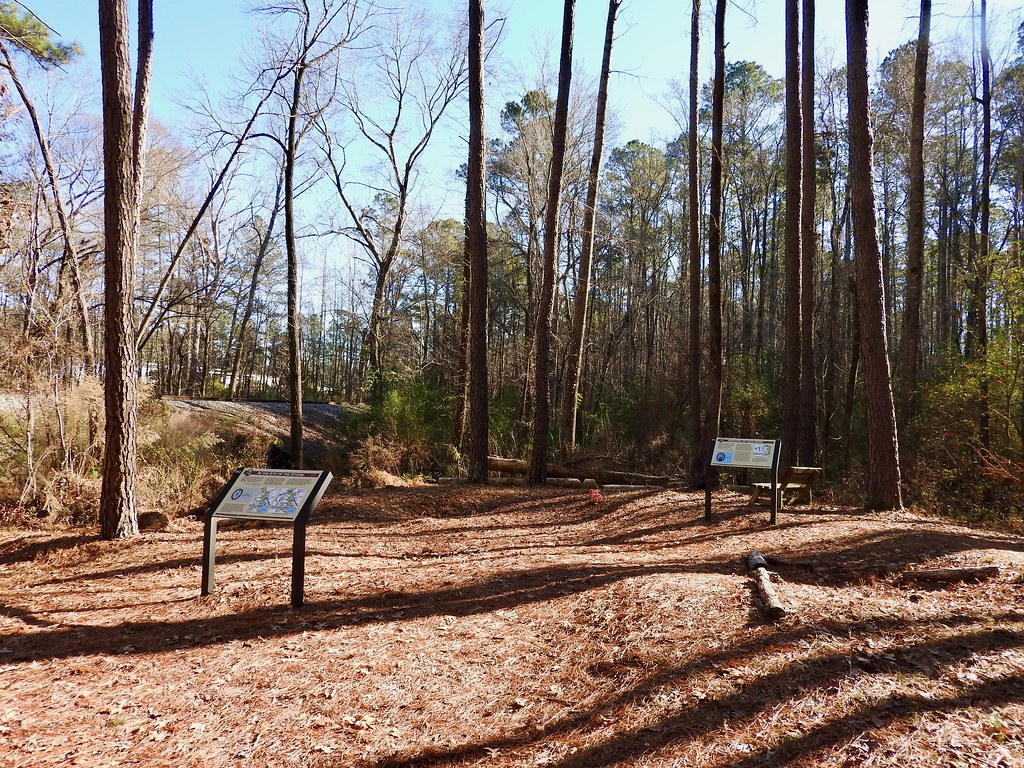These areas near the coast were particularly valuable during a time when limited transportation options existed. Naturally new European arrivals settled there and built their towns. Even so, times were not always wonderful. Differing outlooks led to inevitable conflicts. Just as I’d discovered during my recent trip to South Carolina, military conflicts left their marks here too, a little further up the coast. We didn’t make a concerted effort to find them, but we bumped into them regularly as we traveled through the area.
Tryon Palace

Much of the Revolutionary War bypassed this part of North Carolina. Interestingly though, there was a little-know precursor here called the War of Regulation. It was more properly an uprising than an actual war and added to the colonists grievances.
People increasingly resented rampant corruption, taxation and self-dealing in the North Carolina colony. However, Governor William Tryon favored the status quo where rich planters consolidated political and economic power. Then Gov. Tryon, tone-deaf to bubbling discontent, decided he needed a new residence befitting his title. So he raised taxes on the colonists to build his opulent Tryon Palace in New Bern (map). This went over about as well as one would expect. Eventually the uprising got to a point where the state militia came in and hanged several of the rebellious leaders.
Tryon quickly departed for safer territory a few years later when the American Revolution began. Revolutionaries seized Tryon Palace in 1775 and turned it into their seat of government. After independence, the first few North Carolina governors continued to use Tryon Palace as their official residence. Then the capital moved to Raleigh where it remains today.
Unfortunately the original Tryon Palace burned to the ground in a fire in 1798 and that should have been the end of the story. However, historians discovered the original blueprints and made an exact duplicate of the palace in the 1950’s. But it’s not original. That’s why I felt perfectly content taking a photo of the exterior from the street rather than paying admission for a tour.
Fort Macon

The real action took place during the Civil War, primarily although not exclusively near the beginning of the conflict. During the War of 1812, British forces sailed right up to Washington, DC and burned key government buildings including the White House and the Capitol. The United States vowed this would never happen again. So they built what they called the “Third System” of coastal fortifications. Fort Macon on the eastern tip of Bogue Banks was one of them (map), designed to protect the harbor at Beaufort.
Then the Civil War began. Confederate forces walked up to the fort and simply took it in the first few days of the war. They did the same thing in lots of other places along the coast during that first year. Union forces were spread too thin and their defenses weren’t created for such a scenario.
So in response, Union generals devised a plan. They hoped to seize the Confederate coast and prevent all trade with Europe, strangling it of resources. Along this waterfront it evolved into Gen. Ambrose Burnside’s North Carolina Campaign.
As part of that, Union forces mounted a siege on Fort Macon during March and April of 1862. Cannons pounded the fort by land and by sea. Land batteries proved most effective because they used a new technology; rifling. Projectiles thrown from a rifled cannon simply decimated the fort’s masonry (similar to the story at Fort Pulaski in Georgia). So the Confederates surrendered and Union troops occupied the fort for the remainder of the war. This also marked the demise of Third System forts which became obsolete overnight.
Battle of New Bern

The Battle of New Bern occurred during that same military campaign, in March 1862. Union troops pushed inland away from the coast, and up the rivers and creeks where blockade runners could hide. New Bern became an attractive target, sitting along both the Neuse River and a railroad that connected the coast to the interior.
Confederate forces knew a battle was looming. To prepare, they quickly constructed breastworks along the railroad to repel the Union advance. Many of these earthen mounds and ditches still exist at New Bern Battlefield Park (map).
Well, the Confederates didn’t have much fighting experience and the line collapsed. Union forces pushed through and Confederates made a hasty retreat. Subsequently, Union held the territory for the remainder of the war.
Battle of Newport Barracks
However, the Confederates did attempt to recapture the land deep within its own territory in January 1864. Every tiny place around here had its own Civil War story, and we stumbled upon one at a little pocket park (map) when we stopped at a brewery in Newport. I wish we could have stayed awhile and checked it out, but the brewery was calling us.
After the Battle of New Bern, the Union army dug in and made themselves at home for the next couple of years. At Newport, they improved a former Confederate position and used it as a base of operations, a barracks and a supply depot. Of course this became an attractive target with the Confederates went on the offensive in January 1864.
Actually, “battle” may be a little bit of an overstatement. It was more of a skirmish. Confederates overran the barracks without much effort. Meanwhile their larger campaign to recapture New Bern failed so they abandoned their position once again.
The Modern Era
Some good news. Thing remained quiet after the Civil War and up to the present. Even so, one can’t deny the strategic importance of the coastline and its protected harbors where troops could quickly deploy. It looked quite attractive during the Second World War.
The U.S. Marine Corps selected more than 150,000 acres and 11 miles of beachfront for Camp Lejeune in 1941. It became and remains the premier east coast training facility for amphibious warfare. Here the marines prepare for battles in far-flung places around the globe. A number of smaller military facilities dot the area too, including Marine Corps Air Stations at New River and Cherry Point.
Articles in the Bogue Banks Series
See Also: The Complete Photo Album on Flickr.

Leave a Reply